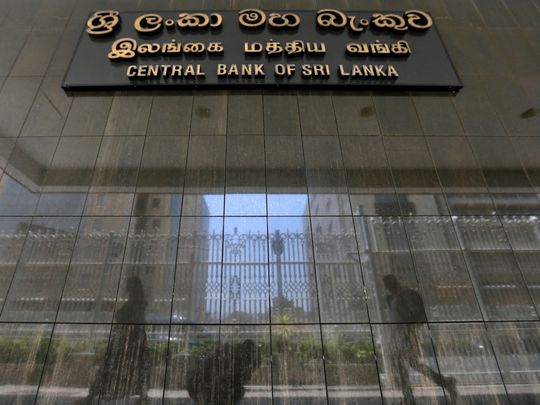
Colombo: Sri Lanka unexpectedly raised borrowing costs for the first time in five meetings to tamp down inflation as the troubled nation looks to secure a $2.9 billion International Monetary Fund loan needed to steady its economy.
The Central Bank of Sri Lanka increased the standing lending facility rate by 100 basis points to 16.5 per cent. “There have been some differences between the CBSL and IMF staff on the inflation outlook,” the central bank said in a statement on its website. The authority had stood pat since August, as it sought to allow previous tightening to damp demand in the economy.
But the IMF was of the view that more action was needed, the central bank said. Given the necessity of fulfilling all the ‘prior actions’ in order to move forward with the finalization of the IMF Extended Fund Facility arrangement, the CBSL said it reached a consensus with the lender to raise rates by a smaller-than-originally -discussed quantum.
While gains in consumer-prices slowed after 950-basis points of interest-rate tightening last year, Sri Lanka continues to have Asia’s quickest inflation at above 50 per cent. Raising interest rates “would pave way for a faster-than-expected deceleration of inflation,” the central bank said.
The policy choice will also help Sri Lanka convince the multilateral lender to disburse the bailout funds to help the island nation shore up its foreign-currency reserves, pay for imports and ease supply shortages that are fanning retail prices. The absence of a formal assurance on debt recast from China, Sri Lanka’s biggest bilateral creditor, has stalled progress on the bailout.
IMF loan
Sri Lanka needs the IMF loan to get access to more funding, and help revive the $81 billion economy in recession.
Friday’s decision would also help lower the spread between policy interest rates and high market interest rates, the central bank said, adding that high interest rates levels observed at present will be contained in the period ahead as money market liquidity conditions improve and the risk premia eases as debt restructuring progresses.
The island nation has increased taxes, cut energy subsidies and has been loosening its grip on the currency by widening the trading band to meet IMF conditions, although those moves could rekindle inflation if not stir up dissent. Workers, including the central bank’s trade unions, on Wednesday protested higher income taxes.
Sri Lanka is committing to flexible exchange rate regime going forward and the rupee will be fully market driven from next week, Governor Nandalal Weerasinghe said at a press conference after the decision. He also said the IMF program is expected to be finalized by March.










